There aren’t many ingredients more essential to baking than dough. The dough is the base of your recipe and may make or break the finished product, whether you’re preparing bread or pizza.
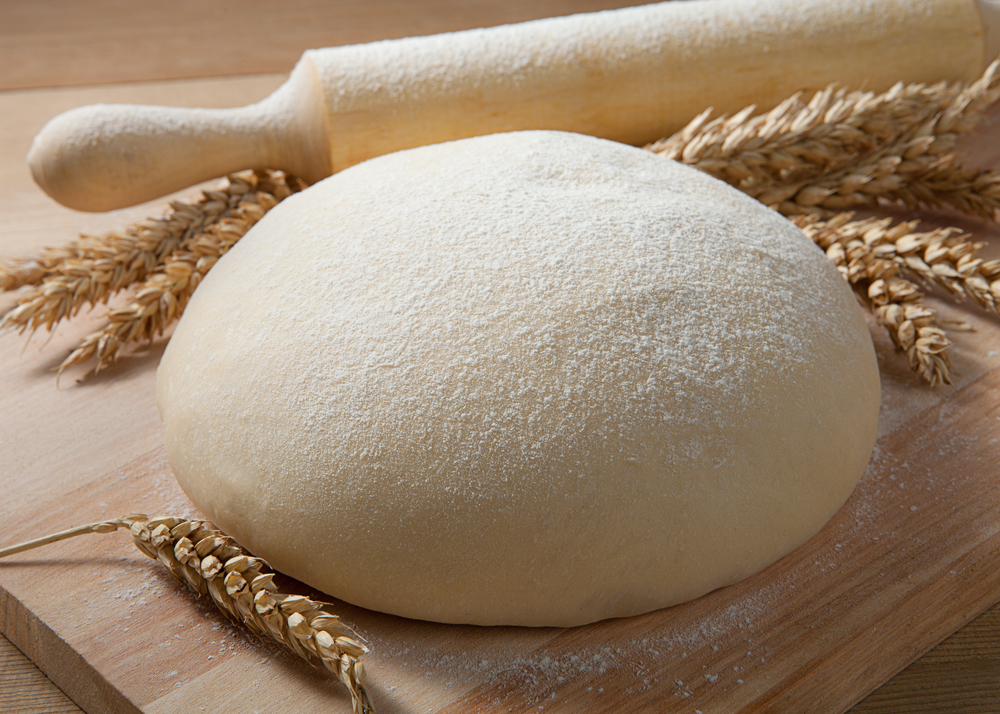
But what distinguishes bread dough from pizza dough, and how do those distinctions impact the outcome?
First and foremost, the amount of water used in the recipe is what makes pizza dough different from bread dough.
In comparison to flour, bread dough often has a higher hydration level or water content. This results in a chewy, fluffy bread by making the dough more elastic and manageable.
Pizza dough, on the other hand, has a lower amount of moisture, producing a denser, crispier crust.
The quantity of yeast utilized in the two doughs is another significant distinction. To get a decent rise, bread dough normally needs more yeast than pizza dough, giving it a fluffier, more bread-like feel.
Contrarily, pizza dough has a thinner, crispier crust thanks to less yeast and a quicker rise period. These are some broad rules to keep in mind, although the precise recipe will obviously vary based on the type of bread or pizza you’re creating.
Ingredients
When it comes to making pizza dough and bread dough, the ingredients are quite similar. However, the way in which they are used can vary greatly. We will break down the key ingredients in both types of dough and highlight their differences.
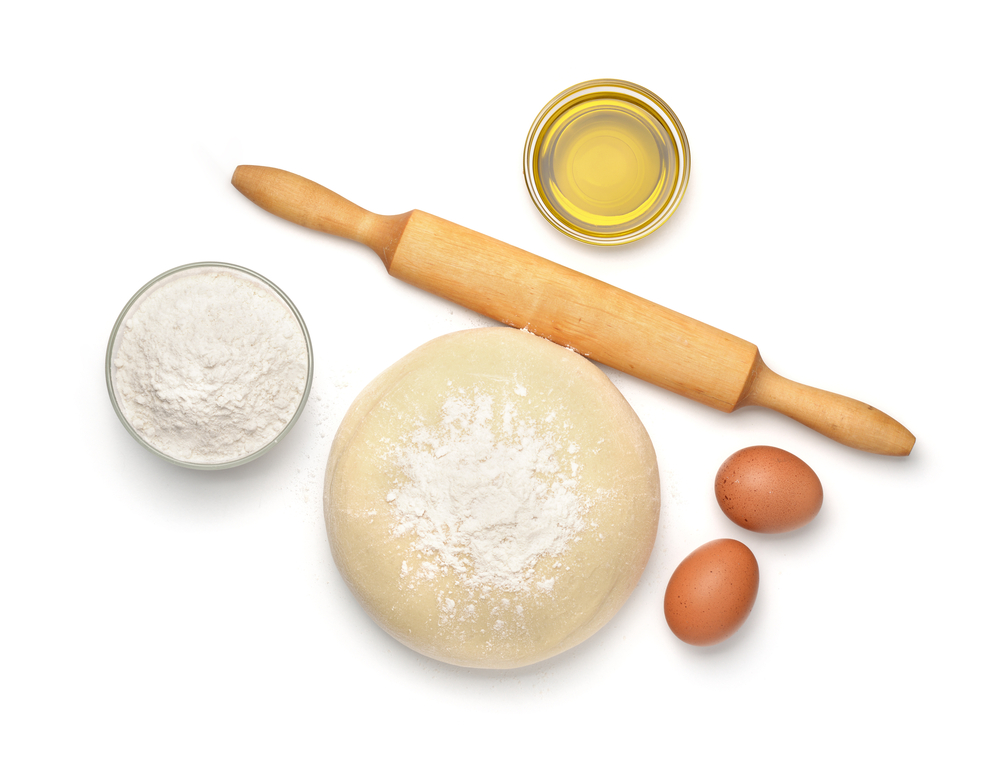
Flour
Both pizza dough and bread dough are made with flour. However, the type of flour used can vary. Bread dough typically requires stronger flour, such as bread flour, which has a higher protein content.
This helps to create a chewier texture in the bread. On the other hand, pizza dough can be made with all-purpose flour, which has a lower protein content. This will result in a softer, more tender crust.
Water
Water is a crucial ingredient in both pizza dough and bread dough. The amount of water used can vary depending on the recipe, but generally, pizza dough requires less water than bread dough.
This is because pizza dough needs to be stiffer in order to hold its shape when it is stretched out.
Salt
Salt is another essential ingredient in both types of dough. It helps to enhance the flavor and also plays a role in the fermentation process.
However, the amount of salt used can vary depending on the recipe. Pizza dough typically requires less salt than bread dough.
Yeast
Yeast is what makes both pizza dough and bread dough rise. However, the type of yeast used can vary. Bread dough typically requires a longer fermentation time and uses slower-acting yeast, such as active dry yeast or instant yeast.
Pizza dough, on the other hand, can be made with faster-acting yeast, such as rapid-rise yeast. By understanding the differences between the two, you can create the perfect dough for your desired outcome.
While other ingredients such as butter, milk, sugar, eggs, olive oil, herbs, cheese, garlic knots, and spices can be added to both types of dough, they are not essential and will not affect the basic structure of the dough.
Kneading and Rising
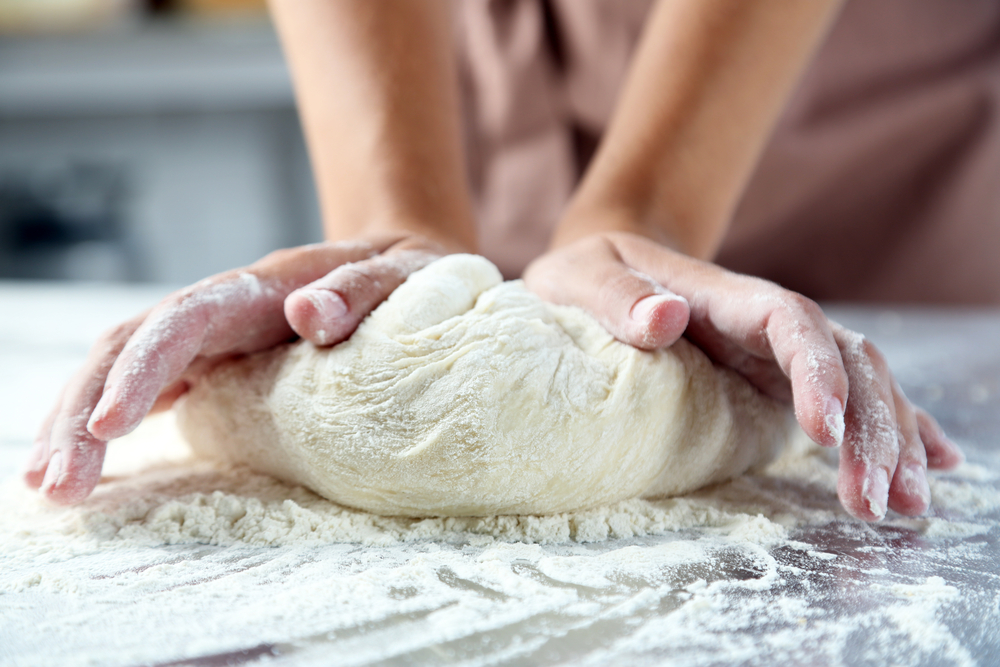
Kneading
When it comes to making pizza dough and bread dough, kneading is an essential step that helps to develop the gluten in the dough.
Gluten is a protein that gives the dough its elasticity and structure. The kneading process helps to distribute the yeast evenly throughout the dough, which is necessary for the dough to rise.
The kneading process for pizza dough and bread dough is slightly different. Pizza dough requires less kneading time, usually between 1-5 minutes, as more kneading can make the dough denser.
Bread dough, on the other hand, is usually kneaded for longer to build up a stronger structure and denser interior.
Rise
After kneading, the dough needs to rise. This is when the yeast in the dough starts to ferment, producing carbon dioxide gas that causes the dough to expand.
The rise time for pizza dough and bread dough can vary depending on the recipe and the temperature of the environment.
Pizza dough usually requires a shorter rise time, typically around 1-2 hours, as the dough needs to be light and airy to create a crispy crust.
Bread dough, on the other hand, requires a longer rise time, typically around 2-4 hours, to allow the dough to develop a more complex flavor and texture.
Fermentation
Fermentation is an important part of the bread-making process that helps to enhance the flavor and texture of the dough.
It is the process of allowing the dough to rest and develop flavor as the yeast continues to produce carbon dioxide gas.
Sourdough starter can be used to ferment both pizza dough and bread dough. A sourdough starter is a mixture of flour and water that has been fermented with wild yeast and bacteria.
It adds a unique flavor to the dough and can help to improve the texture and rise of the dough.
In summary, kneading and rising are essential steps in making both pizza dough and bread dough. The kneading process helps to develop the gluten in the dough, while the rise time allows the yeast to ferment and produce carbon dioxide gas.
Fermentation is an important part of the bread-making process that helps to enhance the flavor and texture of the dough.
Pizza Dough vs Bread Dough
When it comes to pizza dough vs bread dough, there are some significant differences to keep in mind.
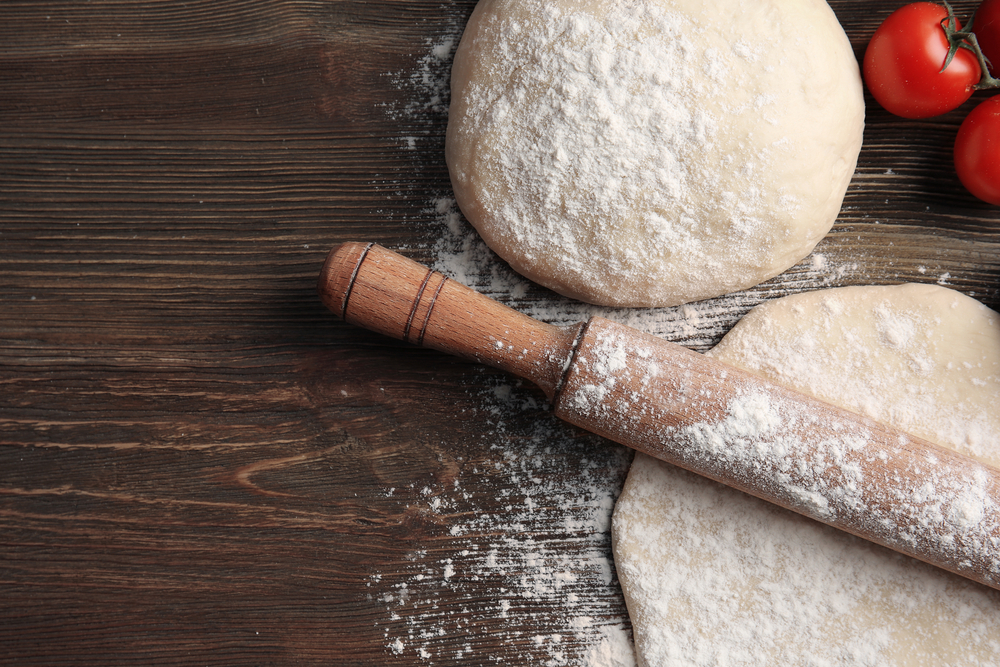
While both are made from similar ingredients, they are used for different purposes and have distinct characteristics.
In this section, we will explore these differences and what they mean for your cooking and baking.
Texture and Structure
One of the most noticeable differences between pizza dough and bread dough is its texture and structure.
Pizza dough is typically much softer, stickier, and more elastic than bread dough. This is because pizza dough is made with a higher hydration level, meaning it has a higher percentage of water than bread dough.
The higher hydration level gives pizza dough a more open, airy structure, which is perfect for the crispy, chewy crusts that we love.
On the other hand, bread dough has a denser, more structured texture. This is because bread dough is typically made with a lower hydration level, which results in a firmer, more structured crumb.
Bread dough is also often enriched with ingredients like eggs, milk, and butter, which contribute to a richer, more complex flavor.
Gluten Development and Extensibility
Another key difference between pizza dough and bread dough is their gluten development and extensibility.
Gluten is a protein found in wheat flour that gives dough its elasticity and structure. In pizza dough, gluten development is essential for creating a stretchy, pliable dough that can be stretched and shaped easily.
This is why pizza dough is typically made with high-gluten flour or bread flour, which has a higher protein content than all-purpose flour.
In bread dough, gluten development is also important, but for slightly different reasons. Bread dough needs to be able to hold its shape during the rising process, so it requires a strong, well-developed gluten structure.
However, bread dough also needs to be extensible, meaning it can stretch without tearing. This is why bread dough is often kneaded for longer periods of time than pizza dough, which helps to develop a strong gluten structure while also making the dough more extensible.
Oil and Crispness
Oil is another factor that can differ between pizza dough and bread dough. Pizza dough typically contains a small amount of oil, which helps to create a crispy, golden crust.
The oil also helps to keep the dough from sticking to the pan or pizza stone during baking.
Bread dough, on the other hand, may or may not contain oil depending on the type of bread being made.
Oil can contribute to a softer, more tender crumb in bread, but it can also inhibit gluten development and make the dough more difficult to shape.
Conclusion
Pizza dough and bread dough have some significant differences in terms of texture, structure, gluten development, and oil content.
Understanding these differences can help you choose the right dough for your recipe and achieve the results you’re looking for. Whether you’re making a crispy, chewy pizza crust or a hearty loaf of bread, the right dough can make all the difference.
Baking and Cooking Methods
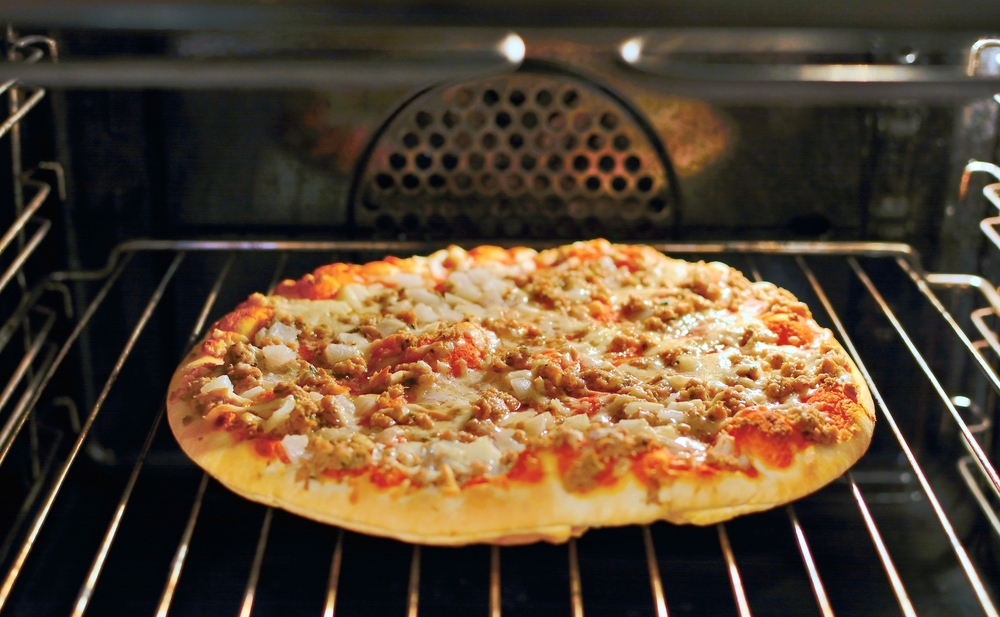
Baking
When it comes to baking pizza dough and bread dough, there are some differences to keep in mind. Pizza dough is typically baked at a higher temperature than bread dough, usually around 450-500°F. This high temperature helps to create a crispy crust and cook the toppings quickly.
Bread dough, on the other hand, is baked at a lower temperature, usually around 375-400°F. This lower temperature allows the bread to cook more evenly and thoroughly without burning the crust.
If you’re baking pizza or bread in a conventional oven, you can use a pizza stone to help achieve the desired texture and flavor.
A pizza stone absorbs moisture from the dough, creating a crispy crust. It also helps to distribute heat evenly, which is important for baking both pizza and bread.
Cooking Method
When it comes to cooking pizza dough and bread dough, there are also some differences to consider. Pizza dough is typically cooked quickly in a wood-fired pizza oven, which can reach temperatures of up to 900°F. This high heat creates a crispy crust and cooks the toppings quickly.
Bread dough is typically cooked in a loaf tin or on a baking sheet in a conventional oven. The dough is allowed to rise before baking, which helps to create a light and airy texture.
Crusts
When it comes to pizza and bread, the crust is one of the most important aspects of the final product. The type of dough used can greatly affect the texture and thickness of the crust.
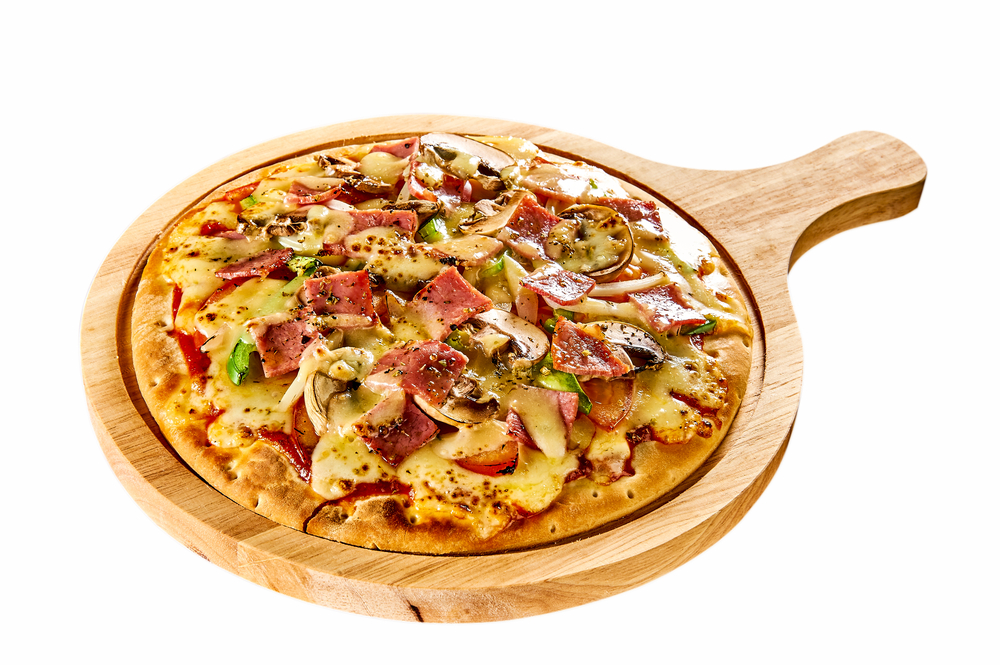
In this section, we’ll explore the differences between thin crust, thick crust, and chewy crust.
Thin Crust
Thin-crust pizza is a popular style that is often associated with New York-style pizza. It is made with a dough that is rolled out very thin, resulting in a crispy crust that is not too doughy.
This style of pizza is great for those who prefer a lighter, less-filling pizza.
Thick Crust
Thick crust pizza, also known as deep dish pizza, is a style that is popular in Chicago. It is made with a dough that is rolled out thicker than thin-crust pizza, resulting in a chewy, doughy crust.
Chewy Crust
Chewy crust pizza is a style that is often associated with sourdough bread. It is made with a dough that is allowed to rise slowly, resulting in a chewy, flavorful crust.
This style of pizza is great for those who prefer a more complex flavor and texture.
When it comes to bread, chewy crust is often associated with artisan bread and ciabatta. These styles of bread are made with a dough that is allowed to rise slowly, resulting in a chewy texture and a complex flavor.
Other baked goods that can benefit from a chewy crust include pretzels, cheese sticks, and cinnamon rolls.
These snacks are often made with a dough that is allowed to rise slowly, resulting in a chewy texture that is perfect for dipping or pulling apart.
When it comes to homemade pizza dough, the type of crust you end up with will depend on the recipe you use and how you handle the dough.
Experiment with different recipes and techniques to find the perfect crust for your taste.
In addition to traditional pizza, the dough can also be used to make pizza rolls, pizza pockets, mini pizzas, and monkey bread. Each of these baked goods can benefit from a different type of crust, so be sure to experiment to find the perfect texture for your creation.
Toppings and Flavor
Toppings
When it comes to pizza, the toppings are what really make it shine. From classic margherita to loaded meat lovers, there are endless possibilities for toppings. However, the toppings you choose can affect the texture and flavor of the pizza.
For example, tomato sauce is a classic pizza topping that adds a tangy, acidic flavor. It also helps to keep the pizza moist and prevents it from drying out.
Cheese is another essential topping that adds richness and creaminess to the pizza. Mozzarella is a popular choice, but other cheeses like cheddar, feta, and goat cheese can also be used.
Flavor
The flavor of the pizza dough itself is also important. Bread dough tends to have a more neutral flavor, while pizza dough is often seasoned with herbs and spices.
Rosemary is a popular herb that is often used in pizza dough to add a fragrant, earthy flavor. Other herbs like basil, oregano, and thyme can also be used.
Spices like garlic and red pepper flakes can add a kick of heat and flavor.
When it comes to taste, bread dough tends to have a denser, chewier texture, while pizza dough is lighter and crispier.
However, the type of flour used can also affect the flavor and texture of the dough. For example, using whole wheat flour can add a nutty, earthy flavor to the dough.
The toppings and flavor of pizza and bread dough can vary greatly depending on personal preference and the recipe being used.
Tomato sauce and cheese are classic toppings that add flavor and moisture to the pizza. Herbs like rosemary and spices like garlic can add a kick of flavor to the dough.
Ultimately, the toppings and flavor of the dough are what make each pizza unique and delicious.
Texture and Structure
When it comes to pizza dough and bread dough, there are some key differences in texture and structure that set them apart. We’ll take a closer look at these differences and what they mean for the final product.
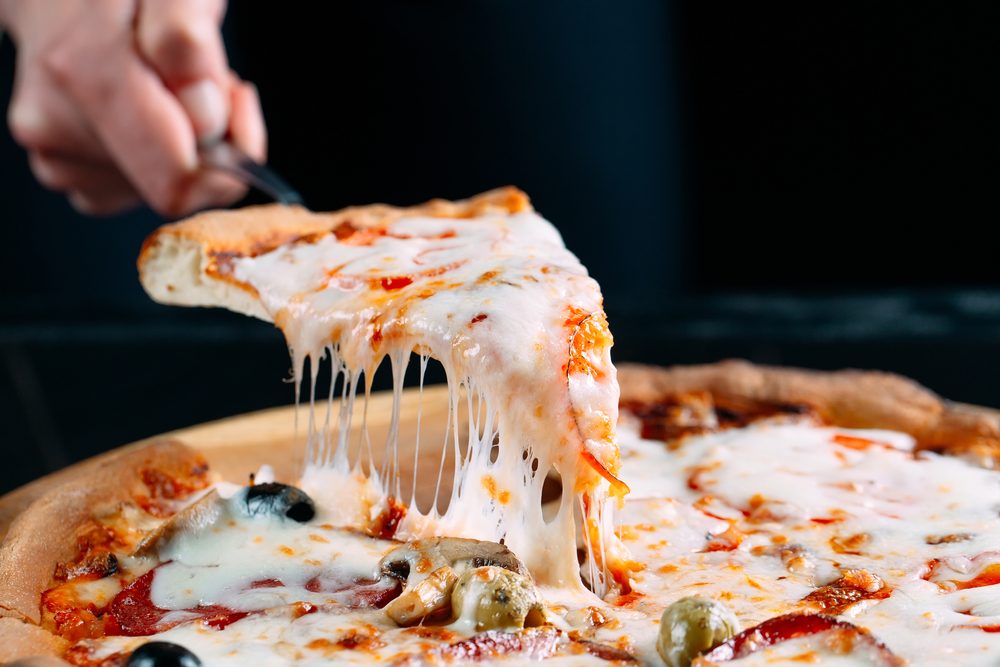
Texture
One of the most noticeable differences between pizza dough and bread dough is the texture. Pizza dough is typically softer, stickier, and more elastic than bread dough.
This is because pizza dough is made with a higher hydration level, meaning it has a higher percentage of water than bread dough.
The higher hydration level gives pizza dough its characteristic chewiness and helps to create those delicious pockets of gas that form during baking.
Bread dough, on the other hand, is usually denser and more structured than pizza dough. This is because bread dough has a lower hydration level, which means it has less water and more flour.
The lower hydration level makes it easier to shape and work with bread dough, but it also means that bread dough doesn’t have the same level of elasticity and chewiness as pizza dough.
Structure
Another key difference between pizza dough and bread dough is the structure. Pizza dough is typically thinner and crispier than bread dough, with a more open crumb structure.
This is because pizza dough is rolled out thinner and baked at a higher temperature, which creates those delicious crispy edges and a more open crumb structure.
Bread dough, on the other hand, is usually thicker and denser, with a more closed crumb structure.
This is because bread dough is typically shaped into loaves or rolls and baked at a lower temperature, which allows the gluten to develop more fully and creates a more structured crumb.
Gluten and Hydration
The differences in texture and structure between pizza dough and bread dough are largely due to differences in gluten and hydration.
Gluten is a protein that forms when flour is mixed with water, and it gives dough its elasticity and structure.
Pizza dough typically has a lower gluten content than bread dough, which makes it more elastic and easier to work with.
Bread dough, on the other hand, has a higher gluten content, which makes it more structured and able to hold its shape.
Hydration also plays a key role in the texture and structure of the dough. The higher the hydration level, the more water the dough contains, which makes it softer, stickier, and more elastic.
The lower the hydration level, the less water the dough contains, which makes it denser and more structured.
Pizza dough is typically softer, stickier, and more elastic than bread dough, with a thinner and crispier structure.
Bread dough is usually denser and more structured, with a thicker and more closed crumb structure.
Conclusion
After comparing and contrasting pizza dough and bread dough, we can see that they have many similarities but also some key differences.
Pizza dough is typically made with higher gluten content, less hydration, and less fat than bread dough. This allows for a more flexible and easy-to-shape dough that can be cooked quickly at high temperatures.
Bread dough, on the other hand, has a higher hydration content, which results in a more elastic and pliable dough that can be used for a variety of bread types.
While pizza dough and bread dough are distinct, they can be used interchangeably in some cases. For example, leftover pizza dough can be used to make focaccia, a type of Italian bread that is similar in texture and flavor to pizza crust.
Alternatively, bread dough can be used to make pizza crust, although it will have a different texture and flavor profile than traditional pizza dough.
It’s important to note that the founder of both bread and pizza is unknown, but it is believed that these foods have been enjoyed by humans for thousands of years.
Whether you prefer a crispy, thin-crust pizza or a hearty loaf of bread, both types of dough have their own unique qualities that make them delicious in their own way.
Understanding the differences between pizza dough and bread dough can help you choose the right type of dough for your culinary creations.
Whether you’re making a traditional Neapolitan pizza or experimenting with new bread recipes, knowing the characteristics of each type of dough will help you achieve the perfect texture and flavor.







Add comment